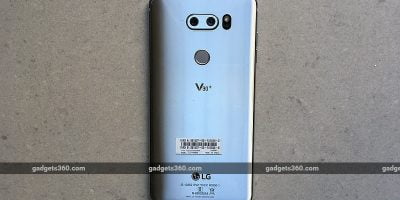
You may have heard this before, but 2017 will be the tenth anniversary of the original iPhone. You’ve been hearing about it since even before the launch of this year’s iPhone 7 and iPhone 7 Plus, and many have prophesied that for the tenth anniversary, Apple intends to do something truly groundbreaking.
A new design is obvious, considering the present one has been in use for three generations now, with minor tweaks. Based on the rumours, iPhone 8 will have an edge-to-edge screen, and also ditch the home button – the most important way of interacting with an iPhone. The fact that this year’s iPhone models ditched the physical button with a haptic simulation of a button press, makes the rumour somewhat believable. But still, it will be a huge shift because the home button performs multiple functions today. Here’s a list of commonly-used tasks it does:
1) Touch to unlock
2) Press once to exit from any app to the home screen
3) Press twice to bring up multitasking
4) Press-and-hold to bring up Siri
5) Tap twice to enable Reachability (on select iPhone models)
Since unlocking your phone is the first thing to do when you use an iPhone, let’s start with that. Many no-home-button rumours are often coupled with Apple integrating Touch ID directly into the screen. Signs towards making this happen are around; Qualcomm’s Sense ID is said to detect fingerprints through a variety of materials including glass, by using ultrasonic sounds. To be fair, we haven’t yet seen implementations of Sense ID literally working from beneath smartphone displays, and phones like the Xiaomi Mi5s or the LeEco Le Max 2 that employ the technology still have dedicated areas on the body to rest your finger.
The other way to unlock a phone without the need of a dedicated space would be using iris scanning – which the ill-fated Samsung Galaxy Note 7 and Microsoft Lumia 950XL employed. Iris scanners are different from facial recognition using the front camera; they work faster and even in dark environments, but the inconvenience being having to point the phone to your face to unlock.
Whichever route Apple takes, it is clear the home button won’t be missed to unlock an iPhone 8. I would put my money on the former than the latter; simply because iOS 10’s highly functional lock screen would become irrelevant if an iPhone just unlocked by looking at it.

Now let’s talk about the rest of the functions, and try to imagine how it might work on the iPhone 8. There are two approaches Apple can take – one is to put an on-screen button (like many Android phones have had for years), freeing the dedicated space under the screen. The other is to create a gesture-based interface that won’t require a virtual home button at all.
If you go with the first possibility, then there will be no change in multitasking, going to the home screen, or invoking Siri, as you’d end up doing the same with a software home button. Enabling ‘Reachability’ could seem tricky, but doable. To the uninitiated, this feature minimises the interface to the bottom-half of the screen for easy one-handed access. Currently it works thanks to the circular capacitive ring surrounding the home button, which reads the gentler double tap input (which is different from a double press). But knowing that your iPhone has been able to understand varying pressures applied on the screen (3D Touch), it isn’t hard to imagine that the on-screen home button will function only if you press hard on it, making it consistent with how it works on the iPhone 7 today; you have to press it like you’d press a mechanical button for it to work. Therefore, it is plausible that the Reachability feature will continue to work as it does today, by gently double-tapping the software home button.
There could be another tiny benefit in going with a software home button. Right now, on your iPhone, you can swipe right from the left edge to go back in an app. But say you’ve clicked a link on Twitter and it opens Safari, you can’t swipe to go back to Twitter. You’ll have to double press the home button and use the app switcher to go back, or use the tiny back button placed on the top-left corner of the screen.
An on-screen home button means a small portion at the bottom of the screen would be reserved. Maybe a dedicated back button could sit right next to the on-screen home button, making it easier to go back to the previous app.
Finally, let’s address the possibility that Apple doesn’t go with an on-screen home button. Which means that the only way to perform all those actions would be via gestures. We already know there’s a gesture to bring up multitasking without pressing the home button, by hard-pressing the left corner on an iPhone with 3D Touch. But everything else will require re-imagination – to go to the home screen, to bring up Siri, or to enable ‘Reachability’.
Sure, the iPad for years has had the four-finger pinch gesture to go to home screen, but there may be a reason why Apple never enabled it for the iPhone (smaller area to perform the gesture, possibly). In all probability, Apple will need to create new, unique gestures to perform these actions, similar to BlackBerry’s PlayBook tablet or the Palm Pre series. Last but not the least; today you can triple-press the Home button to enable Accessibility options like VoiceOver, which again will require a considered implementation. It’s fair to say that this route would bring a major change in how the iPhone has been operated to date, thereby making it the lesser of the two probabilities.
So there you have it – a summary of the changes a (hypothetical) home-button-less iPhone 8 would bring. How do you imagine it’ll work?
[“Source-gadgets.ndtv.”]

